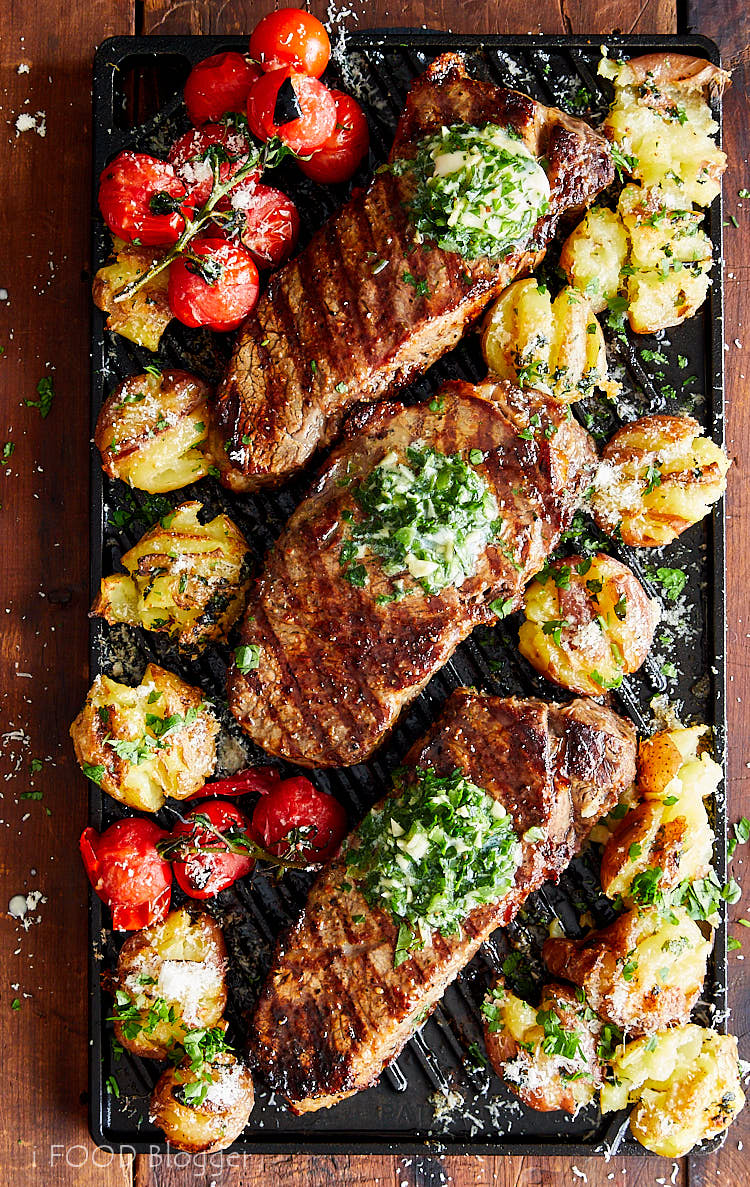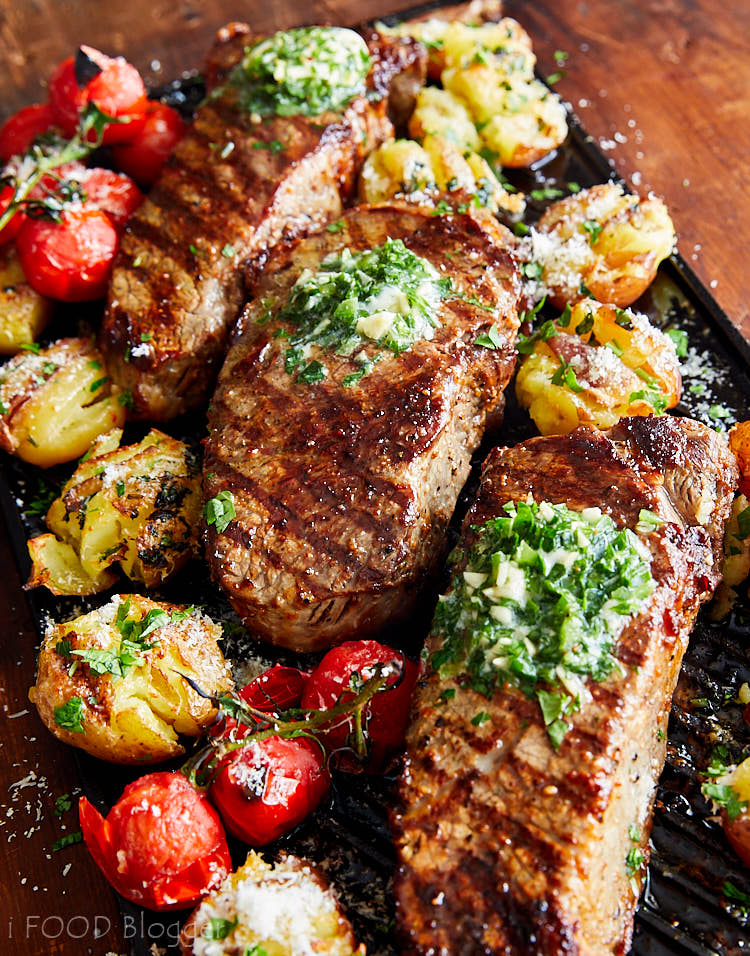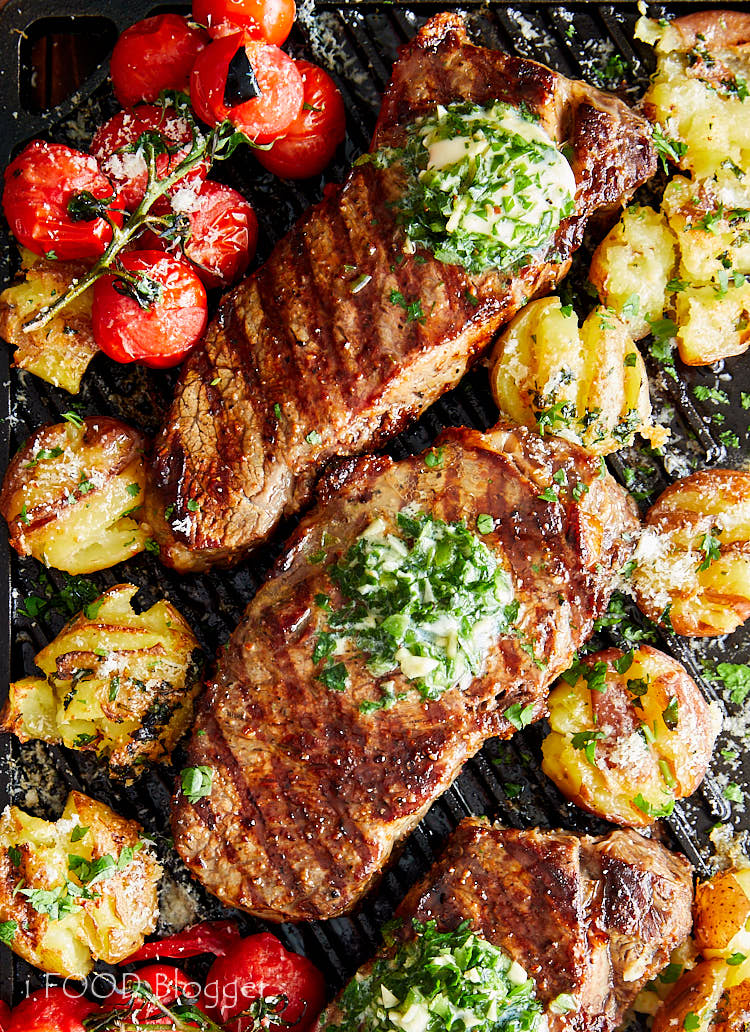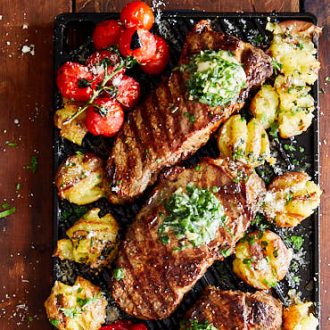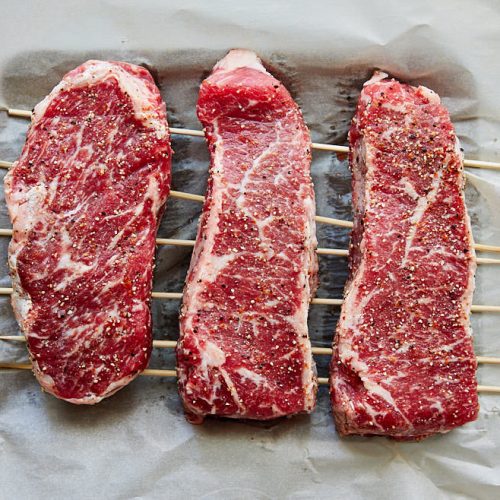This broiled steak recipe is so good that it’s probably even better than my favorite stove top steak because of better caramelization, better flavor and those amazing grill marks. Well, it’s at least as good, but so much better than any broiled steak I’ve made in the past.
The secret to making a great broiled steak
Purely accidentally I tried broiling my steaks on a pre-heated cast iron griddle. The results were quite impressive. Cast iron cut the baking time in half and made the skin much crispier. Prior to using this method my broiled steaks were quite disappointing and only made them to experiment. Finally, a broiled steak that can impress! Lesson learned – a hot cast iron griddle or a cast iron pan in combination with a broiler make a fantastic broiled steak.
What beef cut to use for broiling?
I like striploin. That and filet mignon are my favorite cuts. But any steak will do. The only thing I would recommend is to avoid broiling overly fatty steaks as the fat will splatter and create excessive smoke in the kitchen. If you are dead set on broiling one of those, trim off as much fast as possible.
When to salt steaks?
Salting steak a few hours before cooking makes it tender and tastier. Salt tenderizes and amps up the flavor. However, it needs time to do its magic. Depending on who you ask, the time varies from 45 minutes to several days. In my own experience, you need at least 2 hours to see the results. When you salt the meat, the salt draws water from the meat to the surface through osmosis process. This makes the surface wet and the meat inside drier. Neither is good for making a great steak. However, over time, the salt will get diluted in the surface water and will get re-absorbed back into the meat along with the water. If you have the luxury of waiting a few hours or salting in advance, this will benefit the steak. Otherwise, salting right before cooking is best as wet surface will impact browning.
Bringing the steak to room temperature before broiling
Take the steaks out of the fridge about an hour before cooking and let them come up to room temperature. Cooking steaks brought to room temperature results in a better, more uniformly cooked meat. You will also get better caramelization this way.
Cast iron pan vs cast iron griddle for broiling steak
Either one will work just fine, but you won’t get those gorgeous ‘grill marks’ from a cast iron pan, unless it has a ribbed bottom. Depending on size, can fit more steaks. A round 10-12-inch pan may be less accommodating, depending on how many steaks you want to broil at the same time.
Obtaining the coveted grill marks
After preheating the oven with the griddle inside on high for 20 minutes, the temperature of the griddle’s surface reaches close to 500F. That’s as good as it gets for obtaining perfect grill marks. However, once the meat touches the griddle, the surface temperature immediately starts to drop, and drop fast. Since there is no intense heat source underneath, like a fire pit, the temperature of the cast iron griddle never fully recovers. What this means is that you will only get one set of perfectly looking grill marks, but no more. Flip the meat and the next set of grill marks will be faint and barely visible.
Broiling steaks
Frequent turning of meat results in a more uniform uniform broiling of the steak. I picked up this trick from a post on Serious Eats that recommends flipping steak multiple times for better results. They suggest flipping the steak every 30 seconds. A popular user post on Genius Kitchen suggests flipping the steak during broiling every three minutes. I went with the three minutes recommendation as 30 seconds make more sense when searing a steak on a pan with unidirectional heat flow. When broiling on a hot cast iron griddle, the heat is bi-directional and the heat flow is much less of an issue, while opening and closing of the oven every 30 seconds would lead to significant heat loss and longer cooking time.
Flavorizing your broiled steak
There is no better flavoring for a steak than butter and fresh herbs. Butter improves the texture of the steak, making it more ‘buttery’ tender. Herbs add more flavor. I use herb butter on all my steaks and broiled steak is no exception. Feel free to use the compound butter recipe below or use your own.
Resting time
Resting is important for any steak, and broiled steak is no exception. I recommend a 5 minute rest time. This is enough for the meat fibers to relax and reabsorb some of the juices released during cooking.
